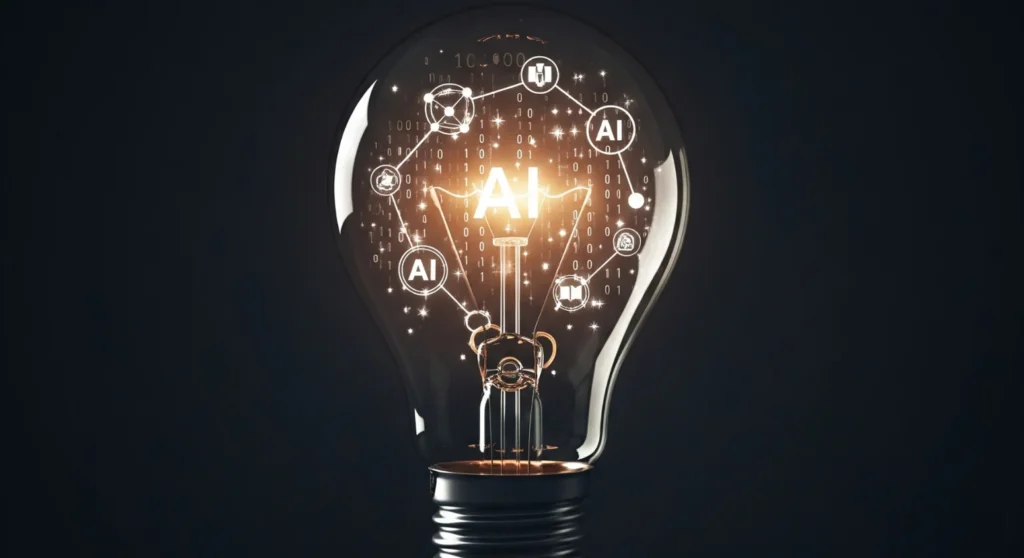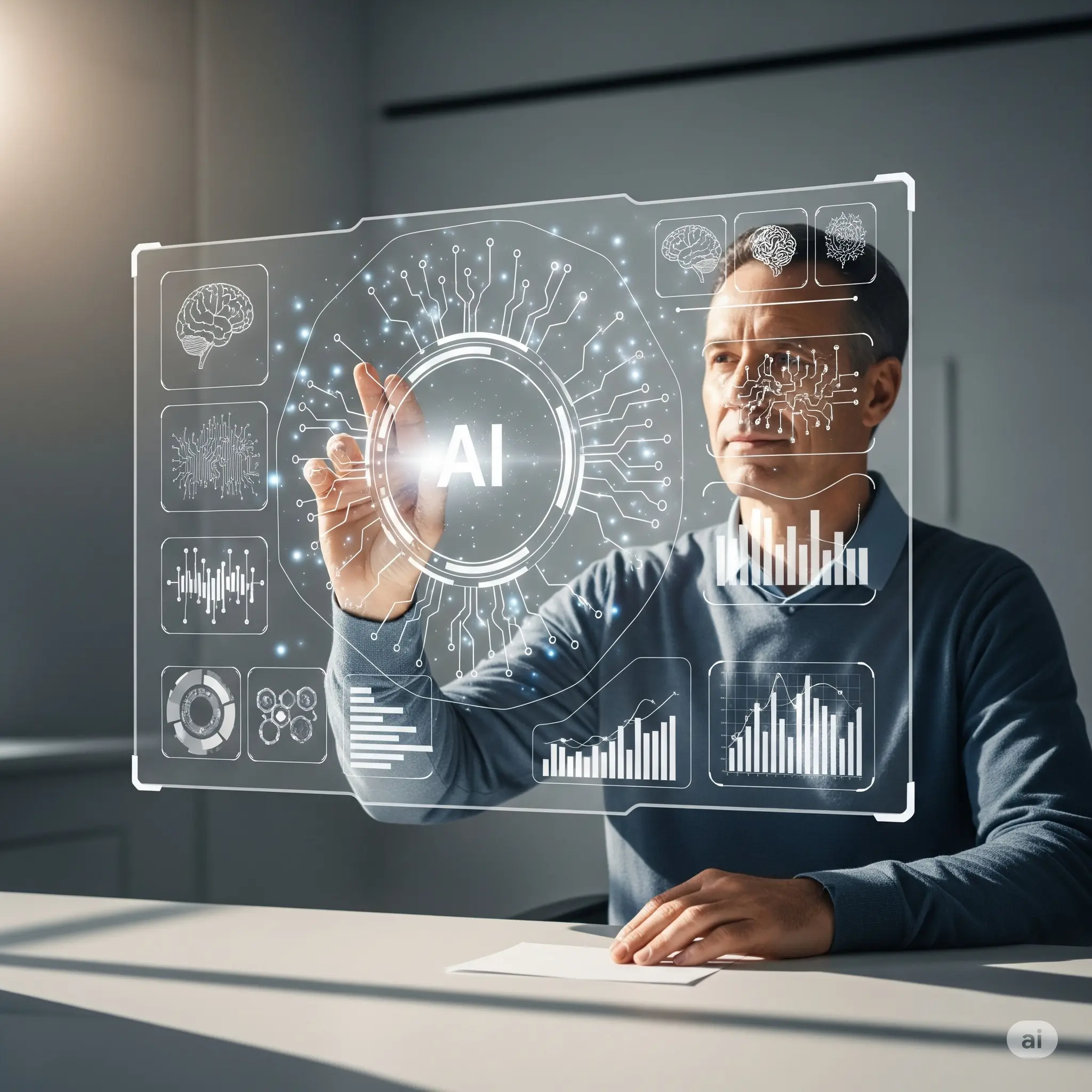What exactly is AI—and why is everyone talking about it? You’ve probably heard the term “artificial intelligence” in the news, at work, or even in casual conversations. Maybe you’ve asked your phone a question, seen personalized ads, or wondered how cars can drive themselves. All of these are examples of AI at work. But still, many people aren’t quite sure what AI really means.
That’s what this blog is here to clear up. We’ll start with one simple sentence that explains what AI is—and then break it down so it’s easy to understand. You don’t need a tech background to follow along. We’re keeping things straightforward and real.
You’ll also see how AI shows up in everyday life, what it’s used for, and why it matters more than ever. If you’ve ever searched for an artificial intelligence definition that actually makes sense, this article is for you.
Let’s take the mystery out of AI, one step at a time.
Table of Contents
Defining Artificial Intelligence in One Simple Sentence

So, what is AI? If you’ve tried to explain artificial intelligence before, you know it can sound confusing. The artificial intelligence definition often feels full of complicated words. But simply put, AI is technology that lets machines think, learn, and make decisions—kind of like people do.
Here’s an easy way to say it in one sentence:
Artificial intelligence is when machines can do tasks that usually need human thinking, like learning, solving problems, and making choices.
Why is this important? Because having a clear and simple AI definition helps everyone understand what AI really means and why it matters.
Here’s why this sentence works well:
- It’s short and easy to understand
- It explains the main ideas: learning, solving problems, and thinking
- It shows what AI can do, not just what it is
You might ask, how do other definitions compare? Most experts agree that AI means machines acting like human intelligence to get things done.
When the definition is simple, it’s easier for everyone—whether you’re reading an artificial intelligence article for school, work, or just curiosity—to understand AI and what it can do.
Next, we’ll look closer at each part of this sentence to see why AI is such an important and exciting technology that’s changing the world.
Breaking Down the Sentence: What Each Part Really Means

Now that we have a simple artificial intelligence definition in one sentence, let’s take a closer look at what each part really means. Understanding these basics will help you see how AI works and why it’s such a powerful tool.
- “Artificial” Means Human-Made
The word artificial means something created by humans, not naturally occurring. So, artificial intelligence refers to machines or software that people build to perform tasks that normally need human thinking. - “Intelligence” Refers to Thinking and Learning
Intelligence is about the ability to learn, solve problems, and make decisions. When we say artificial intelligence, we mean machines that can do some of these things, even if they don’t think exactly like humans. - What Machines Actually Do
AI can:
- Learn from experience, like recognizing patterns in data
- Reason to make decisions based on what it has learned
- Solve problems, sometimes faster and more accurately than people
- Why This Matters
Understanding these parts clears up common questions like:
- What is AI used for? It’s used in things like voice assistants, recommendation systems, and even medical diagnosis.
- Could humans be artificial intelligence? No, AI is man-made, while humans have natural intelligence.
By breaking down the artificial intelligence basics in this way, you get a clearer picture of how AI works—and why it’s changing so many parts of our lives.
This simple breakdown also helps you explain AI to others without confusion. In the next section, we’ll explore some real artificial intelligence examples that show these ideas in action.
Real-World Examples That Bring the Definition to Life
Understanding the artificial intelligence definition is just the first step. But what does AI really look like in everyday life? Let’s explore some clear artificial intelligence examples that show how this technology is already changing the world around us.
Have you ever used a smartphone assistant like Siri or Google Assistant? That’s AI listening to your voice and helping you with tasks. Or maybe you’ve noticed how streaming services like Netflix recommend shows you might like—AI is behind those smart suggestions, learning your preferences over time.
Here are some common ways AI is being used today:
- Voice Assistants: Help with questions, reminders, and even controlling smart home devices.
- Recommendation Systems: From online shopping to music playlists, AI suggests what you might want next.
- Healthcare: AI helps doctors by analyzing medical images and suggesting possible diagnoses.
- Self-Driving Cars: Using AI to understand the environment and make driving decisions.
- Customer Support: Chatbots answer your questions instantly, any time of day.
These examples prove that AI is not just a future idea—it’s part of our daily lives, making things easier and faster. But it’s not just about convenience. AI is also solving complex problems in business, education, and science.
So, when you hear about artificial intelligence applications, think about these practical uses that impact millions of people every day. The more we understand these examples, the better we can appreciate how AI benefits us all.
Next, we’ll look at why having a simple, clear definition of AI is more important than you might think—and how it helps shape the future.
Why Understanding AI in One Sentence Helps You Learn Faster

When you’re just starting to learn about AI, it can feel overwhelming. There are so many terms, ideas, and technologies that it’s easy to get lost. That’s why having a simple artificial intelligence definition in one clear sentence can be a game changer.
Here’s how it helps:
- Quick Understanding: A short, clear definition gives you a snapshot of what AI really is without confusing details.
- Builds a Strong Foundation: Once you know the basics, it’s easier to dive deeper into more complex topics later.
- Improves Focus: You can spot the important parts of AI and avoid getting distracted by unnecessary jargon.
- Makes Learning Less Intimidating: AI feels less like a mystery and more like something you can actually understand and use.
Think of it like learning a new language. You start with simple words and sentences before tackling novels and conversations. The same goes for AI—starting with a clear, easy definition helps you learn faster and with more confidence.
In this blog, we’re making sure you get that solid foundation so the rest of your AI journey will be smoother and more enjoyable. Next, we’ll explore real-life artificial intelligence examples that show how these ideas work in the world around you.
Where to Go From Here: Learning More About AI
Now that you know a simple artificial intelligence definition and have seen some real-life examples, you might wonder, “What should I learn next?” AI is a big topic, and this is just the start.
Here are some easy steps to help you learn more:
- Learn Basic Ideas
Get to know words like machine learning, data, and computers that help AI work. - Understand the Good and Bad
AI has many artificial intelligence benefits, like helping doctors and making tasks easier. But it also has problems, like privacy concerns and job changes. - See How AI Is Used
AI is used in many places—healthcare, schools, banks, and more. Learning about these artificial intelligence applications shows you how AI affects daily life. - Think About Ethics
It’s important to know how AI might affect fairness, privacy, and jobs so we can use it in the right way. - Keep Up with AI’s Future
AI is changing fast. Reading news and articles helps you stay updated about the artificial intelligence future.
Taking these steps will help you understand AI better and see how it matters to you.
Start small—read simple articles, watch videos, or try using AI tools. The more you learn, the easier it will be to understand this amazing technology.
Remember, AI is here to stay, and knowing more about it will help you use it in smart ways.
Conclusion: Why Understanding AI Matters to You
So, what have we learned about AI? Simply put, artificial intelligence means machines doing tasks that usually need human thinking—like learning, solving problems, and making decisions. Now that you have a clear artificial intelligence definition and know how AI is used and helps us, you can see why it matters in our daily lives and in the future.
Wondering how this affects you? Whether you’re a student, worker, or just curious, understanding AI helps you stay informed and ready for the changes it brings. AI isn’t just a fancy word—it’s a tool already making life easier in many ways.
Keep asking questions and exploring—AI is growing fast, and knowing more about it will help you use it in smart and useful ways.
Frequently Asked Questions
1. What is AI in simple words?
AI means machines can learn and make decisions like humans to help with tasks.
2. How is artificial intelligence used today?
AI is used in things like voice assistants, online recommendations, healthcare, and self-driving cars.
3. What are the benefits of artificial intelligence?
AI makes work faster, helps make better choices, and solves tough problems.
4. Does artificial intelligence have a future?
Yes! AI is growing and will keep changing many parts of our lives.
